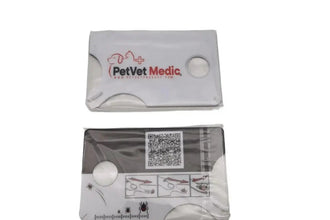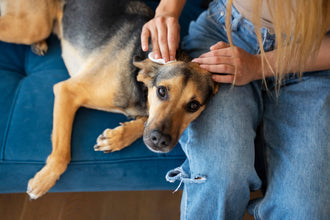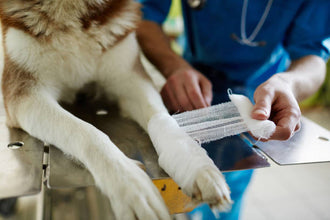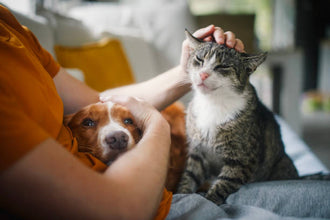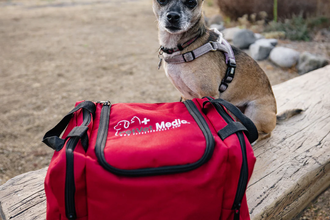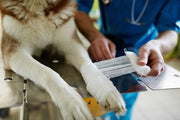
Every responsible pet parent knows that having a pet first aid kit is essential. But owning a kit is only the first step—regular maintenance ensures your supplies are safe, effective, and ready when emergencies strike. Just like human medical kits, pet first aid supplies can expire, become contaminated, or simply run out over time.
A well-maintained kit gives you confidence to act quickly and calmly when your pet needs immediate care. From minor cuts and scrapes to more serious emergencies, having a reliable kit on hand can save your pet’s life.
This guide will walk you through the best practices for maintaining your pet first aid kit, seasonal refresh schedules, step-by-step restocking, and customization tips for different types of pets. You’ll also find a comprehensive checklist, practical maintenance strategies, and expert answers to frequently asked questions.
At PetVetProduct.com, we understand that emergencies are unpredictable—but preparedness can make all the difference. That’s why we created the Pocketbook Pet First Aid Guide—the perfect companion to ensure your kit isn’t just stocked but also used correctly.
Why Pet First Aid Kit Maintenance Matters
1. Emergencies Are Unpredictable
Pets can get into trouble at any time. A playful puppy might run across a road or step on a sharp object, while cats can encounter poisonous plants or insects in the backyard. Even indoor pets are at risk from minor injuries, accidental ingestion, or sudden illnesses.
Having a first aid kit that is fully stocked and ready allows you to respond immediately, minimizing discomfort and potentially life-threatening situations.
2. Expired Items Can Do More Harm Than Good
Pet first aid kits are only useful if the supplies inside are functional:
-
Expired antiseptic may cause irritation or infection.
-
Dried-out wipes or ointments lose effectiveness.
-
Weak bandages may fail to properly secure a wound.
Regular maintenance ensures every item in your kit works as intended, keeping your pet safe.
3. Confidence for Pet Owners
There’s nothing worse than panicking in an emergency because you’re unsure if your supplies are functional. Regular maintenance gives pet parents confidence to act swiftly and correctly. When your kit is organized and up-to-date, you can focus on your pet instead of worrying about missing or ineffective tools.
How Often Should You Update Your Pet First Aid Kit?
Maintaining your kit is about consistency and routine. A well-organized schedule keeps your supplies reliable.
Monthly Quick Check
-
Count bandages, gloves, antiseptic wipes, and other consumables.
-
Replace anything that’s been used.
-
Look for obvious damage or contamination.
Quarterly Detailed Review (Every 3 Months)
-
Check expiration dates on ointments, saline, hydrogen peroxide, and medications.
-
Inspect adhesive items for stickiness.
-
Sanitize reusable tools like scissors, tweezers, and thermometers.
-
Test batteries in electronic devices like digital thermometers.
Seasonal Refresh
-
Summer: Add cooling packs, extra water, and paw protection for hot surfaces.
-
Winter: Include paw balm, extra blankets, and moisture-resistant bandages.
-
Review your kit before vacations, hiking trips, or long road trips.
Annual Deep Clean
-
Replace all perishable items, even if unopened.
-
Clean and sanitize containers to avoid contamination.
-
Review and update your Pocketbook Pet First Aid Guide to ensure instructions are current.
Seasonal Kit Maintenance: Preparing for All Weather
Summer Essentials
Summer brings unique risks such as heatstroke and paw burns. Keep your kit prepared with:
-
Extra water pouches for hydration on walks.
-
Electrolyte supplements (vet-approved) for overheating.
-
Paw protection pads to prevent burns on asphalt or sand.
-
Multiple instant cold packs for heatstroke or swelling.
-
A small fan or cooling towel if you’ll be outdoors for long periods.
Winter Essentials
Winter hazards include frostbite, hypothermia, and ice-related injuries. Maintain your kit with:
-
Extra emergency blankets to protect against cold weather.
-
Paw balm or wax for ice and salt protection.
-
Moisture-resistant bandages for wet conditions.
-
Extra gloves or towels to help handle pets safely in icy weather.
Year-Round Essentials
Regardless of season, your kit should always include:
-
Gauze pads and rolls
-
Adhesive tape and self-adhesive wraps
-
Antiseptic wipes and solutions
-
Hydrogen peroxide (3%)
-
Saline rinse
-
Scissors and tweezers
-
Digital thermometer
-
Gloves (non-latex)
-
Cold packs
-
Emergency blanket
-
Antibiotic ointments
-
Tick remover tool
-
Muzzle
-
Updated Pocketbook Pet First Aid Guide
Essential Pet First Aid Supplies to Check
Bandaging Materials
-
Gauze pads & rolls: Replace if damp or damaged.
-
Adhesive tape: Ensure it still sticks properly.
-
Self-adhesive wraps: Check elasticity and replace if stretched out.
Antiseptic & Cleaning Supplies
-
Antiseptic wipes: Replace expired or dried-out packs.
-
Saline rinse: Must remain sterile and sealed.
Tools
-
Scissors: Keep sharp and rust-free.
-
Tweezers: Sanitize before and after use.
-
Digital thermometer: Test batteries quarterly.
Medications & Ointments
-
Antibiotic ointments: Replace if expired or discolored.
-
Eye rinses: Discard cloudy or old bottles.
-
Tick removers: Inspect for cleanliness and functionality.
Extras
-
Gloves: Replace brittle or torn pairs.
-
Cold packs: Test for leaks.
-
Emergency blanket: Check for rips.
-
Muzzle: Ensure straps and size are correct for your pet.
How to Customize Your Pet First Aid Kit
Every pet has unique needs. Customize your kit based on species, size, and lifestyle:
Dogs:
-
Paw booties for hikes or rough terrain
-
Extra-large bandages for bigger breeds
-
Activated charcoal for ingestion emergencies (vet-approved)
-
Extra leash and harness for safe restraint
Cats:
-
Soft muzzle or towel for restraint
-
Smaller bandages and tweezers
-
Extra saline for eye rinses
-
Small carriers for quick transport
Small Animals (Rabbits, Guinea Pigs, Birds):
-
Smaller gauze rolls
-
Pet-safe syringes for hydration
-
Specific first aid guides for delicate care
-
Extra hay or soft bedding to keep them comfortable post-injury
How to Spot Poor Kit Hygiene
A clean, organized kit is essential. Look for warning signs:
-
Sticky or leaking bottles
-
Moldy or damaged packaging
-
Rusty or dirty tools
-
Bandages stored loosely instead of sealed
Tip: Store supplies in sealed compartments and wipe down containers regularly. A poorly maintained kit can actually contaminate wounds instead of protecting your pet.
Step-by-Step Refresh Routine
-
Empty the Kit: Lay out all items to get a full inventory.
-
Check Expiry Dates: Separate expired, contaminated, or used items.
-
Test Tools: Open scissors, check tweezers, turn on the thermometer.
-
Restock Essentials: Use a checklist to replace missing items.
-
Clean the Container: Wipe down surfaces with a mild disinfectant.
-
Repack Neatly: Organize supplies by category (bandages, cleaning, tools).
-
Insert Guide: Place your Pocketbook Pet First Aid Guide on top for quick access.
Kit Restocking Checklist
Tape this inside your kit for easy reference:
-
Gauze pads & rolls
-
Adhesive tape & wraps
-
Antiseptic wipes & solution
-
Hydrogen peroxide (3%)
-
Saline rinse
-
Scissors & tweezers
-
Thermometer
-
Gloves (non-latex)
-
Cold packs
-
Emergency blanket
-
Antibiotic ointments
-
Tick remover tool
-
Muzzle
-
Updated Pocketbook Pet First Aid Guide
The Role of the Pocketbook Pet First Aid Guide
Even the best supplies are useless if you don’t know how to use them. The Pocketbook Pet First Aid Guide is an essential companion:
-
Step-by-step emergency charts
-
Instructions for wound care, choking, poisoning, seizures, and more
-
Compact, waterproof, and portable
-
Complements any first aid kit for dogs or cats
Having the guide ensures that you’re not just prepared with supplies, but also with knowledge to act confidently.
Real-Life Example: Why Maintenance Matters
Consider a dog owner who discovered a cut on their dog’s paw after a summer hike. Reaching for the first aid kit, they realized the antiseptic wipes had dried out, the gauze was stuck together, and the adhesive tape was weak. Without proper maintenance, a minor injury could have turned serious.
A maintained kit allows for immediate action: clean the wound, apply ointment, and secure it with fresh bandages—preventing infection and reducing discomfort. This is why routine checks and seasonal updates are so crucial.
Conclusion: A Maintained Kit Is a Life-Saving Kit
Owning a pet first aid kit is responsible, but maintaining it is essential. By following a simple routine—monthly checks, seasonal refreshes, and annual deep cleans—you ensure your kit is always ready for emergencies.
Pair your kit with the Pocketbook Pet First Aid Guide from PetVetProduct for clear instructions and peace of mind. True love for your pet isn’t just about cuddles—it’s about being ready for anything, at any time.
👉 Explore PetVetProduct.com today to complete your kit with the Pocketbook Pet First Aid Guide.
FAQs
Once a year—replace perishable items and sanitize the kit thoroughly.
Yes, but customize for each species. Dogs and cats may need different muzzles or medications.
Dispose safely—never use expired medications or contaminated tools.
Yes, travel kits should be lighter but include essentials like gauze, antiseptic, gloves, and the guide.
Absolutely. Include your vet’s number and the nearest 24/7 emergency clinic.






